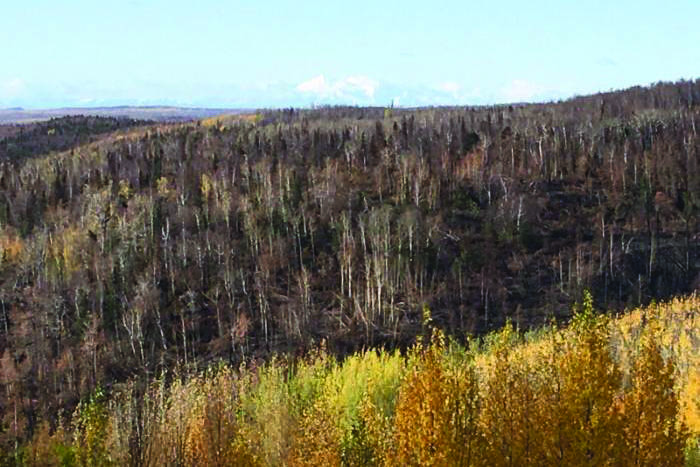Winter may have arrived on the Kenai Peninsula this month, but hazards from the Swan Lake Fire are still prevalent near burned areas.
In the Kenai National Wildlife Refuge, several trails, cabins, campgrounds and roads are still closed due to the fire — which ignited north of Sterling in June and burned more than 160,000 acres of forest before it was contained this fall.
Andy Loranger, manager of the Kenai National Wildlife Refuge, said burned areas in the refuge are closed to the public. He said residents should exercise caution when they venture into the refuge. Heated ash pits are still prevalent, but are slowly decreasing as winter settles in. Snag hazards, when burned trees fall over, can happen without warning, he said.
“It doesn’t take much for burned trees to fall,” Loranger said.
Jean Lake Campground, Lower Ohmer Lake Campground and Engineer Lake Campground are closed, a Nov. 13 Emergency Closure Order from the refuge said.
Kenai River Trail, Hideout Trail, the Seven Lakes Trail east of Kelly Lake and west of Engineer Lake, Marsh Lake Trail, Skyline Trail, Fuller Lakes Trail are Surprise Creek Trail are closed as well as Mystery Creek Road and the Trapper Joe and Big Indian Cabins.
The closure will remain in effect until Dec. 12, unless they are rescinded or extended by the refuge.
This summer, other public lands were closed due to the fire, including areas of the Chugach National Forest. Public affairs and partnership staff officer Alicia King said the forest is open. Areas that were closed due to the fire were reopened in early October, though hazards that can difficult to see still exist, she said.
The Chugach forest service is also warning residents about weakened trees and ash pits.
“Very light wind or just shifting soils can cause these trees to fall without warning,” King said in an email. “The fire has burned very deep in some places, leaving ash pits behind. What appears to be solid ground can be empty space still holding heat that is able to cause severe burns.”
The Chugach National Forest is asking residents to avoid burned areas until fire crews have been able to evaluate them for safety.

